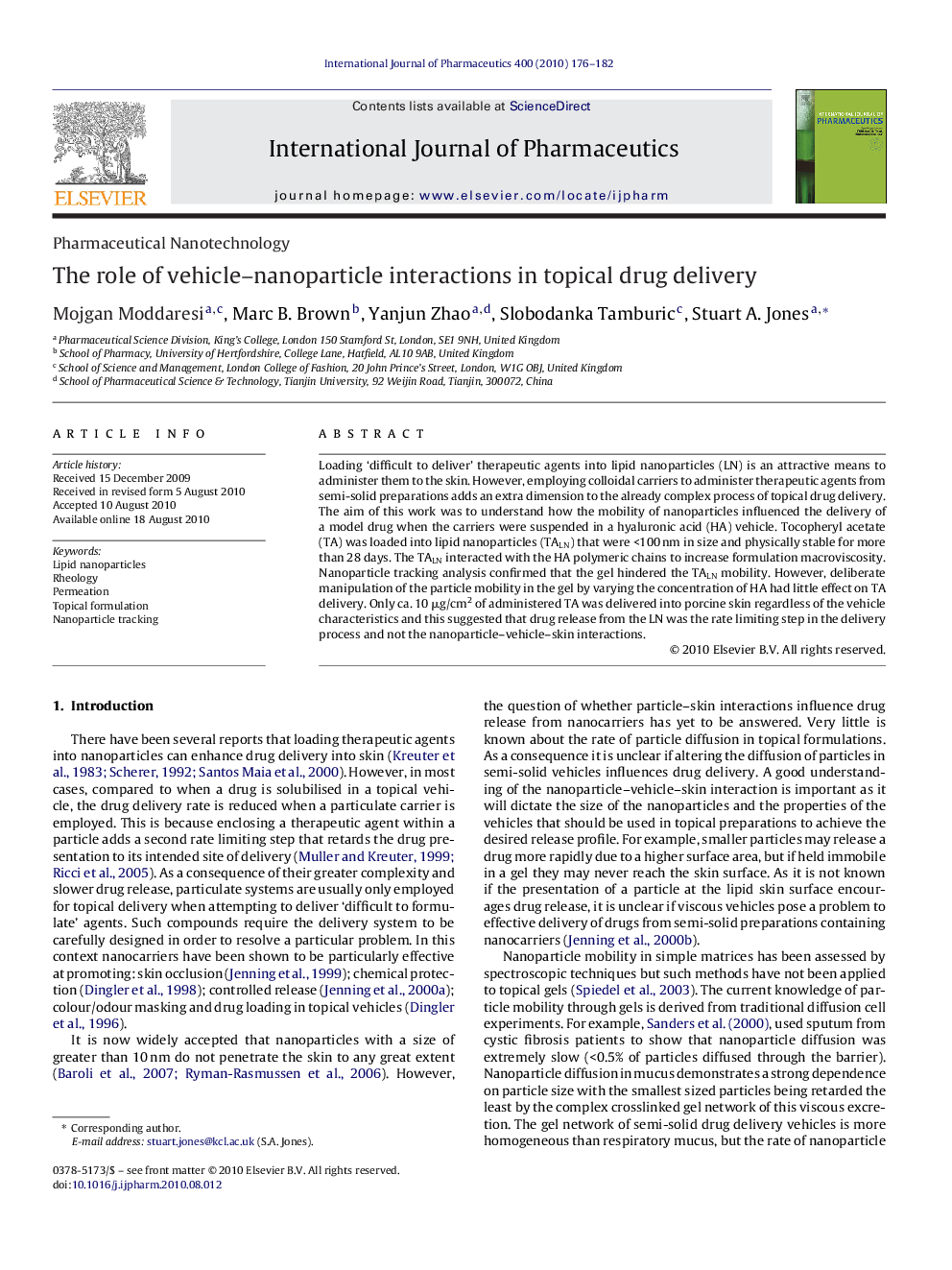| Article ID | Journal | Published Year | Pages | File Type |
|---|---|---|---|---|
| 2503801 | International Journal of Pharmaceutics | 2010 | 7 Pages |
Loading ‘difficult to deliver’ therapeutic agents into lipid nanoparticles (LN) is an attractive means to administer them to the skin. However, employing colloidal carriers to administer therapeutic agents from semi-solid preparations adds an extra dimension to the already complex process of topical drug delivery. The aim of this work was to understand how the mobility of nanoparticles influenced the delivery of a model drug when the carriers were suspended in a hyaluronic acid (HA) vehicle. Tocopheryl acetate (TA) was loaded into lipid nanoparticles (TALN) that were <100 nm in size and physically stable for more than 28 days. The TALN interacted with the HA polymeric chains to increase formulation macroviscosity. Nanoparticle tracking analysis confirmed that the gel hindered the TALN mobility. However, deliberate manipulation of the particle mobility in the gel by varying the concentration of HA had little effect on TA delivery. Only ca. 10 μg/cm2 of administered TA was delivered into porcine skin regardless of the vehicle characteristics and this suggested that drug release from the LN was the rate limiting step in the delivery process and not the nanoparticle–vehicle–skin interactions.
